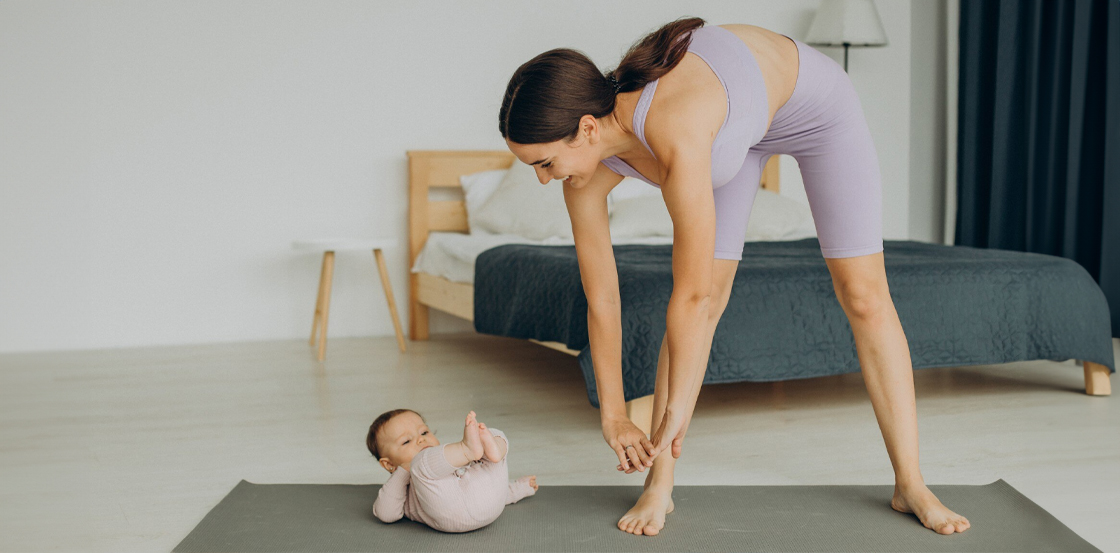Post link copied to clipboard!

Postpartum exercise is a crucial aspect of post-pregnancy and childbirth. While these exercises bring immense joy and fulfillment, they also address specific challenges, particularly concerning your body. One of the areas demanding special attention after childbirth is the pelvic floor.
These muscles support your internal organs, controlling bladder and bowel functions and enhancing sexual pleasure. However, they can weaken during pregnancy and childbirth. We’ve compiled a comprehensive guide to safe and effective postpartum exercises to help you regain strength and vitality in your pelvic floor.
Before delving into the exercises, let’s take a moment to appreciate the significance of pelvic floor muscles. These muscles are like a hammock, stretching across the base of your pelvis. They provide support to the uterus, bladder, and rectum. A robust pelvic floor ensures you maintain proper control over urination and bowel movements and heightened sensations during intimacy.
Kegel exercises are renowned for their effectiveness in strengthening the pelvic floor muscles. They involve contracting and relaxing these muscles, almost like trying to stop the flow of urine mid-stream. Start with ten-second holds and gradually increase the duration as you progress. Conduct three sets of ten repeats daily.
Pelvic tilts help stabilize the pelvis and strengthen the lower back muscles, which can indirectly contribute to pelvic floor strength. Lie on your back with your knees bent, then tilt your pelvis upward while engaging your abdominal muscles. Hold for a few seconds and release. Repeat this exercise ten times, gradually increasing the repetitions.
The bridge position is a highly effective method. It can enhance your core and pelvic floor strength. Begin by lying on your back with your knees bent and feet resting flat on the floor.
Gradually elevate your hips towards the ceiling, actively involving your glutes and engaging the pelvic floor muscles. Hold this position for a moment before gently lowering your hips back down. Aim to complete three sets of ten repetitions to benefit from this exercise.
Squats engage your entire lower body, including the pelvic floor. Stand with your feet shoulder-width apart, then lower your body as if you’re sitting back in a chair. Keep your back straight and chest up. Perform three sets of ten squats.
Incorporating these postpartum exercises into your daily routine is crucial to regaining pelvic floor strength. Consistency is essential, and gradual progression is necessary to avoid strain. As you continue these exercises, you’ll notice improved bladder control, enhanced core stability, and increased confidence in your postpartum journey.
During pregnancy and childbirth, your body experiences truly remarkable transformations. It deserves special care and attention during the postpartum phase. Strengthening your pelvic floor muscles improves your physical well-being and overall quality of life.
By dedicating time to these targeted exercises, you’re taking a proactive step towards a healthier and more confident you. So, embrace these postpartum exercises and empower yourself on your post-baby wellness journey.